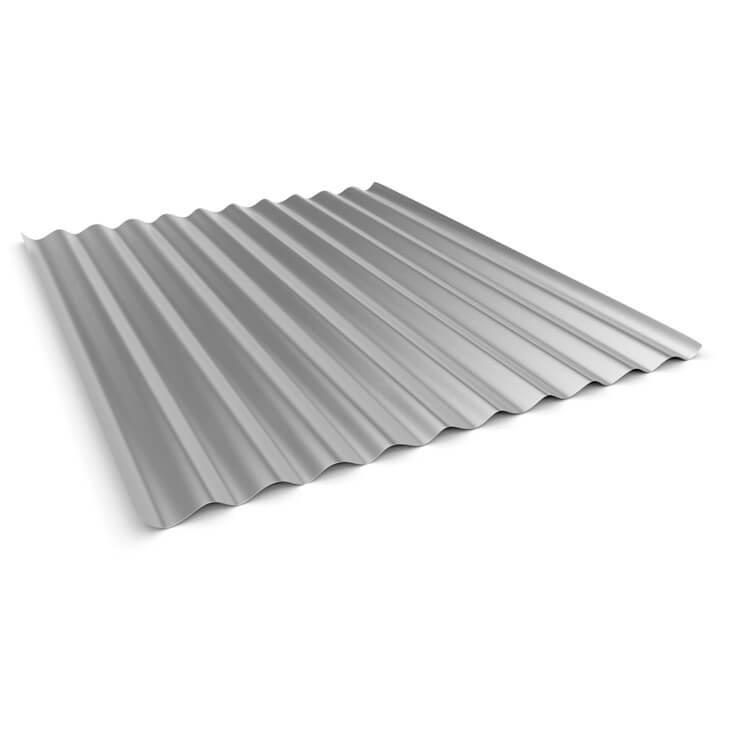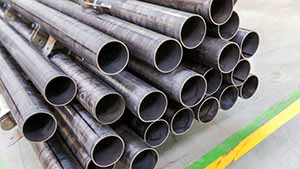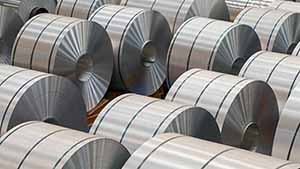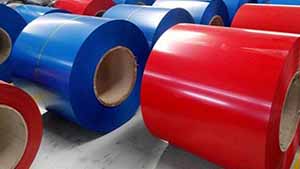Galvanized Roofing Sheet
Product Introduction of Galvanized Roofing Sheet
Product Name. Galvanized steel for roofing
Thickness: 0.12~0.8mm, or customized
Width: 665~1150mm, or customized
Length: 1000~11800mm, or customized
Grade: SGCC/DX51D+Z, DX52D+Z, DX53D+Z, etc.
Zinc coating:30-275g/m2, or customized
Angle:square, minimized triangle, zero-shaped triangle, large-shaped triangle
Hardness:soft, full hard, semi-hard
Standard:EN, JIS, GB

Specifications of Galvanized Roofing Sheet
| Thickness | 0.12~0.8mm, or customized |
| Width | 665~1150mm, or customized |
| Length | 1000~11800mm or customized |
| Grade | SGCC/DX51D+Z, DX52D+Z,DX53D+Z, etc |
| Zinc Coating | 30-275g/m2, or customized |
| Spangle | Regular spangle, Minimized spangle, Zero spangle, Big spangle |
| Treatment | Slightly Oiled, Dry |
| Hardness | Soft, Full Hard, Half Hard |
| Packing | Standard export package |
| Standard | EN, JIS, GB |
Advantages of Galvanized Roofing Sheet
The cost of materials and installation is relatively low compared to standing seam and metal shingles.
Being metal, it is fire resistant and moss growth as well as insects and rodents will not be a problem.
A wide range of premium colors are available, including custom colors for Kynar 500 finishes.
Great return on investment
Eco-friendly and energy efficient
Disadvantages of Galvanized Roofing Sheet
Not as leak-proof as a standing seam or metal shingles due to exposed fasteners.
Typically requires maintenance after 15-20 years, such as inspection and retightening of fasteners and re-caulking if necessary.
Aesthetically, not the most beautiful metal roofing option, although this is a subjective consideration.
Why Install Galvanized Roofing Sheet for Your Residential Roof?
Are you looking for a roof for your new residence, or a replacement residence for a new roof? Or are you looking for a metal roofing sheet supplier from China?
Please consider choosing galvanized sheet roofing from Hebei Zhongxing. This roofing material is great for long-lasting durability and provides effective protection for your home.
Roofing galvanized steel sheets are known for their durability. However, what makes corrugated roofing strong and provides perfect performance for your home?
Roofing galvanized steel is a corrugated metal roofing sheet. This actually makes the roof stronger and more durable. What makes corrugated roofing strong is its corrugated shape. Corrugated roofing is very light in weight. The durability of a metal roofing structure is greatly enhanced when the sheets are formed in a corrugated shape.
If you have any metal roofing needs, please contact Hebei Sinosteel here to get the best offers and services. Our products and services are amazing and worth it for the longevity of your commercial property or home.
Galvanized corrugated roofing sheets are just plain awesome, but what are the features of corrugated metal roofing that make it the best roofing option for you? Here are some examples to help you decide.
1. Long life service
Metal roofing is known to last a long time due to its corrosion resistance. The average quality steel roofing sheet can last up to 20 years. However, due to the corrugated shape of the panels, it is not susceptible to wear and corrosion, which makes them last an average of 30 years or more.
2. Excellent weather protection
Corrugated galvanized steel roofing sheets are highly resistant to extreme weather conditions, whether it is hail and heavy snow in winter or scorching heat in summer, corrugated roofing sheets are highly resistant to severe weather.
3. Less energy expenditure
The corrugated shape of the steel sheeting allows the corrugated roof to reflect more sunlight and heat, which repels heat from entering the interior of your home. Since less heat can pass through it, your home won’t get too hot in the summertime. You will be able to save energy by consuming less energy to cool your rooms.
FAQ
The corrosion resistance of stainless steel coils decreases as the carbon content increases. Therefore, the carbon content of most stainless steels is low, up to 1.2%, and some steels have a low ωC (carbon content) of even less than 0.03% (such as 00Cr12). The main alloying element in stainless steel coil is Cr (chromium). Only when the Cr content reaches a certain value, the steel has corrosion resistance. Therefore, the goods Cr (chromium) content of at least 10.5%. Stainless steel coil also contains Ni, Ti, Mn, N, Nb, Mo, Si, Cu and other elements.
Most of the requirements for use are to maintain the original appearance of the building for a long time. In determining which type of goods to choose, the main considerations are the required aesthetic standards, the corrosiveness of the local atmosphere and the cleaning system to be used. However, other applications are increasingly seeking structural integrity or impermeability. Examples include roofs and sidewalls of industrial buildings. In these applications, construction cost to the owner may be more important than aesthetics, and the surface may not be very clean. The use of 304 stainless steel coils in dry interior environments is quite effective.
Weldability. Different product uses have different requirements for weldability. A class of tableware generally does not require weldability, even including some cookware companies. However, most products require raw materials with good weldability, such as second-class tableware, insulation cups, steel pipes, water heaters, water dispensers, etc.
Corrosion resistance. Most stainless steel coil products require good corrosion resistance, such as Class I or Class II tableware, kitchen utensils, water heaters, water dispensers, etc.
Polishing performance. In today’s society, stainless steel coil products in the production process are generally polished, only a few products such as water heaters, drinking fountains, etc. do not need to be polished. Therefore, this requires raw materials with good polishing performance.
1. The need for pre-treatment
Pretreatment is an important treatment step before the surface of stainless steel coil parts enter surface treatment (including pickling, chemical polishing and electrochemical polishing, electroplating, passivation, black coating, coloring, chemical treatment, etc.). During the forming process of goods parts, the surface may adhere to oil stains, burrs, rough surfaces and oxides. Therefore, before surface treatment, oil stains, burrs, uneven surfaces and oxides must be removed in order to obtain subsequent satisfactory results through processing.
2. Treatment of removed dirt
Stainless steel coil surface pretreatment in the need to remove the dirt can be divided into two categories: organic and inorganic substances.
(1) organic dirt. Including mineral oil (such as diesel, oil, paraffin, gypsum, etc.) and animal oil, vegetable oil (such as soybean oil, camellia oil, rapeseed oil, lard, butter, etc.). These oils are mainly from the stainless steel coil zero cattle processing process used in the lubricant. , cutting oil, quenching oil, polishing paste and polishing paste, and fingerprints.
(2) Inorganic dirt. Including dirt, dust particles, oxides and other contaminants generated during the heat treatment process.
3. Pretreatment steps for stainless steel coil parts
(1) The surface is mechanically leveled. Eliminate the roughness of the stainless steel coil surface, through mechanical polishing and grinding to achieve a surface finish.
(2) Degreasing. Remove the surface oil and dirt.
(3) Acid washing. Remove the oxides on the surface.
(4) Weak corrosion. Activates the surface to be treated, removes the surface passivation film, and exposes the metal crystal structure.
Stainless steel is a high-alloy steel, with a large resistance to rolling deformation. In order to carry out high-efficiency and high-precision rolling, rigid rolling mills should be used, generally multi-roller cold rolling mill.
Special welding process is also a feature of cold-rolled stainless steel coil production.
In the production process of cold rolled stainless steel coil, the raw material (hot rolled coil) should be annealed, intermediate annealing should be carried out in the cold rolling process, and the final product should be annealed, so annealing is an important part of the production.
Cold-rolled stainless steel is a high-grade steel products, there are strict requirements for surface quality. Not only are metallurgical defects caused by the previous process not allowed, but also obvious defects caused by the cold rolling process.





